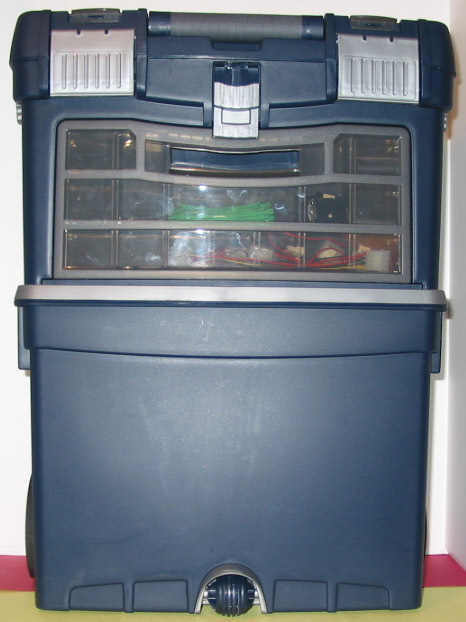How To Assemble The Ultimate Toolbox
Selecting The Box
Selecting the right box to house your tools and to suit your requirements is one of the most important decisions you need to make as a working technician. Toolboxes come in all shapes, sizes and price ranges. A trip to the fishing tackle section of a local sporting goods store yields a complete line of fishing tackle boxes that are probably well suited for your needs. Although they may not look as professional as other alternatives, in my opinion, function matters more than looks, but that it is up to you to decide if the same holds true for yourself. Your local hardware store also carries a complete line of different types of toolboxes. But don't be hasty in making your decision until your have looked at all the other possible contenders.
A variety of companies also make suitcase/ briefcase style toolboxes for the professional technician. However, these tend to be expensive and often don't address the needs of a computer professional. Often times, these can be purchased in a case and tools all-in-one package, which may be the solution for those wanting looks over function. And, this is not to say that these types of toolboxes can't fit the bill. However, for the ultimate customization, it is most often necessary to assemble your own selection of items rather than buying a pre-packaged solution.
What Do You Use?
Over the years, I have had several kinds of toolboxes and have spent a lot of time assembling the collection of tools that I need to have on hand to be able to complete a task. Some people may tend to cut corners in their purchase of tools related to this industry by buying integrated tools. It has been my experience that a vast selection of individual, task-specific tools last longer and offer a lot more alternatives than an all-in-one tool, and this is my personal preference. And, of course, having some universal tools, such as a Leatherman, is a very good idea. I always carry a Leatherman in my laptop bag for emergencies. It has been my experience, however, that when you are in the middle of a complicated repair and you are trying to use an integrated tool, there is inevitably a situation where that all-in-one won't fit in the tight space or it doesn't work for this repair, and in that case, it can make you feel like you want to throw both the integrated tool and the computer you are working on down the nearest flight of stairs.
As far as the box that holds the tools goes, I have gone through many types of cases. I have tried the somewhat customized, steel briefcase, and that worked well for me for a long time. But, as my work environment became more sophisticated, so did the number of items, and the amount of space required to haul those items around grew, too.
Earlier this year, I came across the perfect blend of function and size in a toolbox. Although this box is significantly larger than any toolbox that I have ever seen, it does offer many options that I have never had before in a toolbox.
The Keter MasterCart 604968 is my toolbox of choice. It is large and roomy and I don't have any problems finding enough room to carry all of the tools necessary for any situation.
My choice was the Keter MasterCart (604968). As first glance, this toolbox compared to normal toolboxes reminded me of a monster truck sitting next to a pickup truck. It is large. But after significant examination of all of the nooks and crannies and the options that it has to offer, I found that, for my purposes, this was the utopia of toolboxes. When I first looked at the MasterCart, it appeared to be overkill for the needs of a typical technician. However, with the increased amount of items that a technician is expected to have on hand, a significant amount of storage is not only convenient, it is a necessity.
Get Tom's Hardware's best news and in-depth reviews, straight to your inbox.
